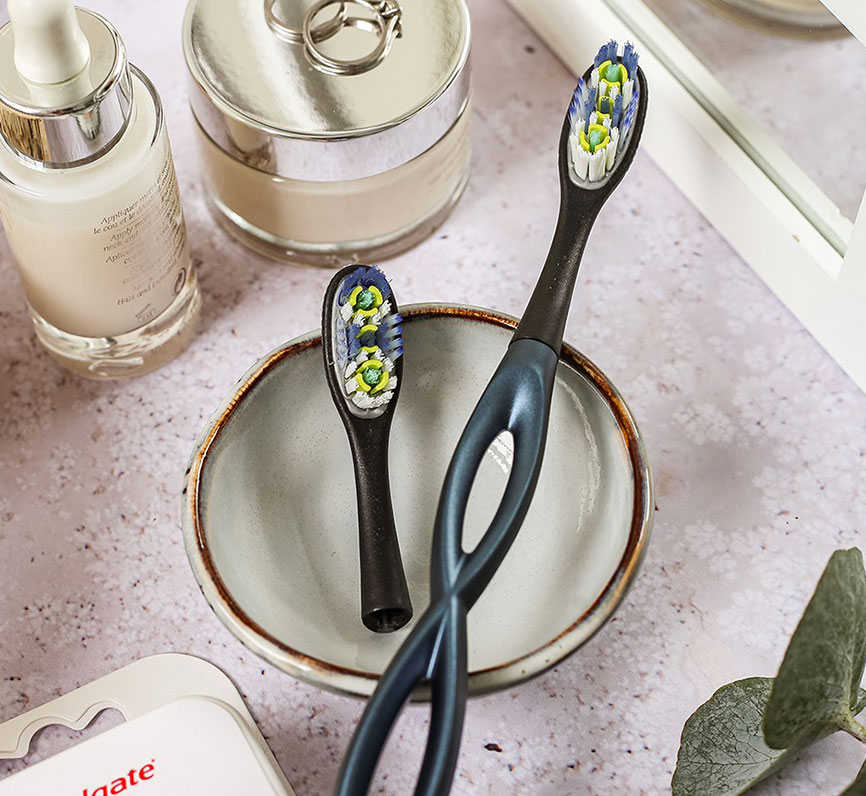https://embed-ssl.wistia.com/deliveries/a49b34de41db4a2c02945e5b4800c258.mp4
The most important step is to fully understand the job to be done with the product. At the end of the day, a product has to work, or people won’t use it – even if it’s the most sustainable option. An example we have is the Colgate toothbrush. It’s called Colgate Keep. It’s called that way because you keep the handle, and you only change out the brush head, so it’s a great solution for a manual toothbrush where you’re using 80% less plastic because you keep the aluminum handle forever. But again, we had to really make sure that the product performs as somebody would expect a normal toothbrush to perform – so we did a lot of work on the brush head to make sure the performance was there. We really had to make sure that it delivered on cleaning and a comfortable experience. Then we talked about sustainability as an added benefit.
That’s one thing that we’ve learned – leaning fully on sustainability isn’t enough. It might drive novelty and trial, but it’s not enough to drive repeat.
You really need to fulfill a consumer’s job to be done in order to continue them on in the process.
